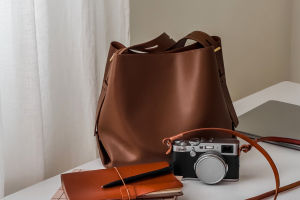In today's digital world, screens dominate our daily routines—whether for work, study, or entertainment. With so much screen time, many people wonder: can blue light glasses really help protect our eyes?
If you have been curious about these glasses and their effects, you are not alone. Let's explore the role of blue light glasses in maintaining eye health and whether they are worth considering for your daily use.
Understanding Blue Light and Its Sources
Blue light is a high-energy, short-wavelength light that is naturally emitted by the sun and also produced by artificial sources such as LED screens, smartphones, tablets, and computer monitors. While exposure to natural blue light during the day helps regulate our sleep-wake cycle, excessive exposure to artificial blue light—especially in the evening—can disrupt sleep and potentially cause eye discomfort.
Many people spend hours daily in front of screens, which emit a significant amount of blue light. This has led to growing interest in whether filtering blue light through special lenses can reduce eye strain and protect long-term vision.
What Are Blue Light Glasses?
Blue light glasses are specially designed eyewear that filters or blocks a portion of blue light emitted from digital screens and artificial lighting. These glasses often feature lenses with a slight yellow tint or a special coating that reduces the amount of blue light reaching the eyes.
The purpose of these glasses is twofold: to minimize digital eye strain symptoms such as dryness, irritation, and headaches, and to potentially improve sleep quality by limiting blue light exposure before bedtime.
How Blue Light Affects Eye Health
Prolonged exposure to blue light can lead to digital eye strain, which manifests as discomfort, blurred vision, and fatigue. This is mainly due to the high energy of blue light causing more scattering within the eye, which makes focusing more difficult.
Additionally, blue light can interfere with the body's production of melatonin, the hormone responsible for regulating sleep. Exposure to blue light late at night can disrupt circadian rhythms, leading to difficulty falling asleep or poor sleep quality.
There is ongoing research regarding whether blue light contributes to retinal damage or age-related macular degeneration (AMD). While conclusive evidence is limited, experts agree that managing exposure is a prudent approach.
Scientific Insights and Expert Opinions
There is currently no solid proof that blue light from screens leads to lasting damage to the eyes. However, limiting screen exposure and taking frequent breaks can help alleviate digital eye strain.
Research has shown that blue light-blocking lenses can reduce symptoms of eye strain and improve comfort during prolonged screen use. Some sleep studies also suggest that wearing blue light glasses in the evening may improve sleep quality.
Eye care professionals often recommend the 20-20-20 rule: every 20 minutes, look at something 20 feet away for at least 20 seconds. This simple habit, combined with blue light glasses, can enhance eye comfort.
Who Can Benefit Most from Blue Light Glasses?
Individuals who spend long hours in front of digital screens, such as office workers, students, and gamers, are likely to benefit the most from blue light glasses. People who experience frequent headaches, dry eyes, or trouble sleeping may find relief by incorporating these glasses into their routine.
It is important to remember that blue light glasses are not a cure-all. They work best as part of a broader strategy including good lighting, screen breaks, proper screen positioning, and maintaining eye hygiene.
Choosing the Right Blue Light Glasses
When selecting blue light glasses, consider factors such as lens quality, comfort, and style. Lenses with anti-reflective coatings enhance visual clarity by reducing glare. Some glasses offer adjustable tint levels depending on your needs.
Consulting with an optometrist can help tailor your choice, especially if you wear prescription lenses. Many brands now offer blue light blocking options combined with prescription glasses, making it easier to protect your eyes without sacrificing vision correction.
Additional Tips for Eye Health in the Digital Era
Besides using blue light glasses, there are several practical steps to protect your eyes:
• Adjust screen brightness to match ambient lighting.
• Maintain a proper distance (about an arm's length) from screens.
• Use screen filters or apps that reduce blue light emissions.
• Keep your eyes hydrated with regular blinking or artificial tears.
• Ensure your workspace is well-lit to reduce strain.
By adopting a holistic approach, you can safeguard your eye health while still enjoying the benefits of modern technology.


